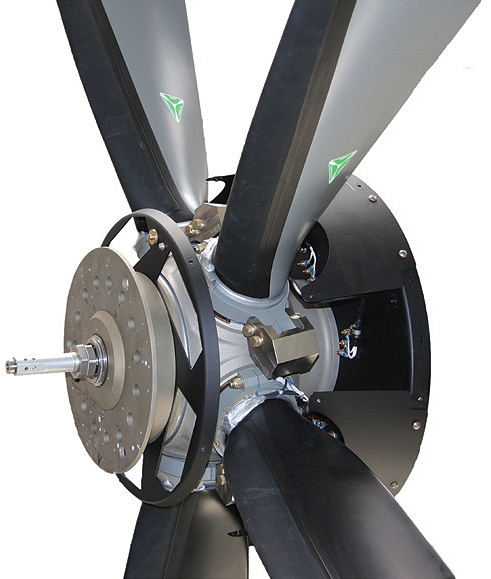Simulation Software Lifts Prop-Plane Manufacturing
If you're a frequent flyer in Europe, where shorter regional flights are common, chances are you've flow on a propeller airplane. The propeller aircraft works on a fan design — the blades transmit power by converting rotational motion into thrust. By contrast, a jet engine shoots hot exhaust gases backward causing the aircraft's forward thrust. Propellers make sense for smaller planes since they are lighter and more efficient at slower air speeds. Larger planes require the power of the jet engine, but are more expensive to purchase and maintain.
 Ever since jet aircraft landed on the runway, airplane propeller manufacturing has declined, but that may be about to change. An article in Design World cites modern advances in propeller design that have led to a new generation of prop-planes that are faster, more fuel-efficient, and produce lower emissions. One of only three remaining world-wide propeller manufacturers, MT-Propeller Entwicklung GmBh, uses a patented approach to create natural-composite blades with "a plasticized wood core, a shell of fiber-reinforced plastics, and a bonded metal erosion sheath." The final product is not only lighter than aluminum blades, but has an excellent vibration and noise profile, and can withstand continuous exposure to harsh environments.
Ever since jet aircraft landed on the runway, airplane propeller manufacturing has declined, but that may be about to change. An article in Design World cites modern advances in propeller design that have led to a new generation of prop-planes that are faster, more fuel-efficient, and produce lower emissions. One of only three remaining world-wide propeller manufacturers, MT-Propeller Entwicklung GmBh, uses a patented approach to create natural-composite blades with "a plasticized wood core, a shell of fiber-reinforced plastics, and a bonded metal erosion sheath." The final product is not only lighter than aluminum blades, but has an excellent vibration and noise profile, and can withstand continuous exposure to harsh environments.
In order to manufacture such a high-precision product, the engineers need to know how the materials will interact over time. For this purpose, MT-Propeller relies on the modeling power of Femap software for FEA and the Nastran software solver. Femap is a CAD and solver-independent pre- and post-processor that allows engineers to perform static, dynamic, linear, and non-linear calculations. The software provides insight into the different materials and points of contact, and most importantly, helps engineers spot and eliminate blade weaknesses early on in the design process. One potential crisis was averted when FEA verification showed that the adhesive used between the bonding steel and the composite materials was not strong enough.
The simulation and validation process is more than 99 percent accurate. The software tools significantly reduce the need for physical testing, thereby also cutting product development time and costs. Since implementing a software-based design process, MT-Propeller builds only one physical prototype for each blade product it makes.
More information can be found in the MT-Propeller case study.










